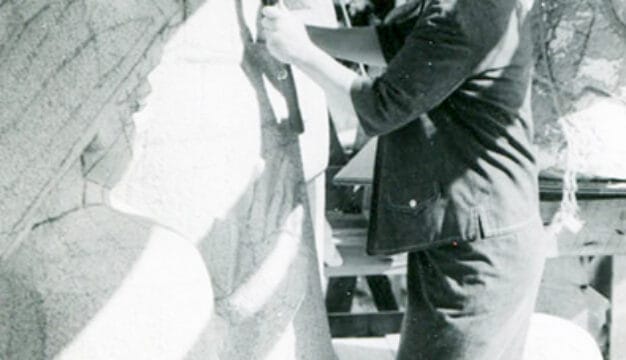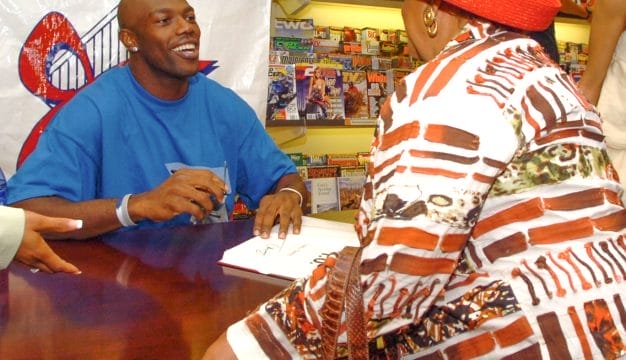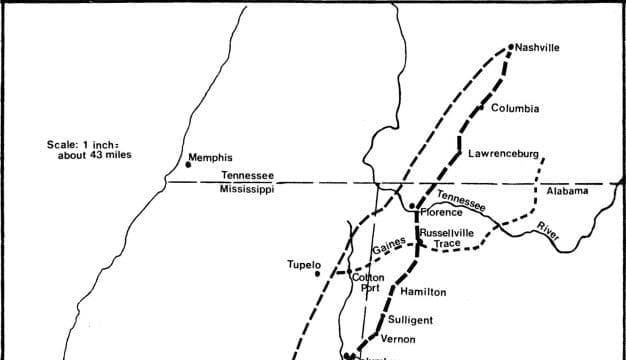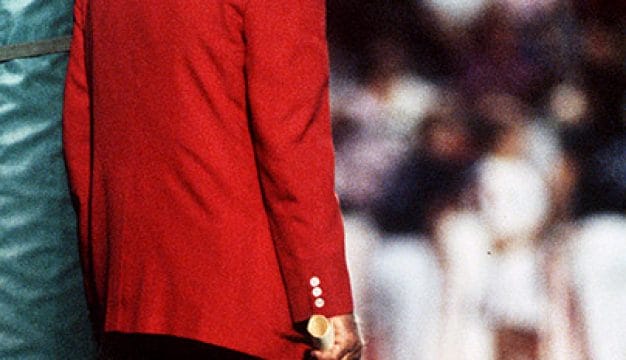Heart of Dixie Railroad Museum
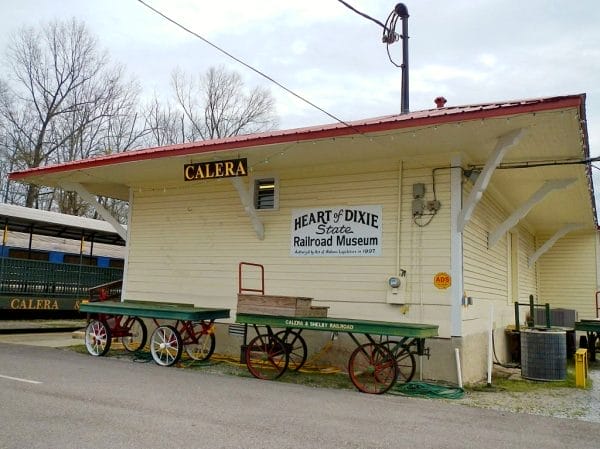 Heart of Dixie Railroad Museum
The Heart of Dixie Railroad Museum (HDRM) in Calera, Shelby County, is considered the official railroad museum of the state of Alabama. Open since 1962, the museum’s mission is to restore, preserve, and operate historically significant railroad equipment and host exhibits, educational programs, and fully functioning railroads.
Heart of Dixie Railroad Museum
The Heart of Dixie Railroad Museum (HDRM) in Calera, Shelby County, is considered the official railroad museum of the state of Alabama. Open since 1962, the museum’s mission is to restore, preserve, and operate historically significant railroad equipment and host exhibits, educational programs, and fully functioning railroads.
In 1962, a group of Birmingham-area railroad enthusiasts launched the Heart of Dixie Railroad Club (HDRC), a chapter of the National Railroad Historical Society (NRHS), with the aim of preserving the heritage of railroading for the enjoyment of future generations. Members initially organized meetings and coordinated railroad outings for interested parties. The earliest meetings of this organization were held in the Alabama Power Company auditorium, the assembly room of the Southern Railroad Transportation Building, and at Handley Memorial Presbyterian Church, whose train-enthusiast pastor, John Kingsley Morgan, was the father of David P. Morgan, the editor of the popular Trains magazine from 1953 to 1987.
The HDRC began gathering the materials and artifacts related to railroad history, an initiative that resulted in downtown Birmingham’s Railroad Park. The HDRC received most of its holdings as donations from railroad companies or businesses that formerly held rail assets (such as Alabama Power and Monsanto) and purchased other artifacts through a fund established by the HDRC. The 60-member HDRC still acts as the governing body of the museum and meets monthly to determine museum policies, manage organizational funds, and artifact and monetary donations. The museum contains some rail cars and locomotives that belonged to lines that operated throughout the continental United States, but most of them serviced regional lines in the Southeast. The HDRC acquired steam locomotives, wooden cabooses, dining and sleeper cars, and also secured a lease of a plot of unused track from the St. Louis-San Francisco Railway at Powell Avenue and 18th Street South. The Railroad Park exhibit attracted many spectators who paid to see the vintage locomotives and railcars, but its prime source of revenue was derived from ticket sales for rail excursions.
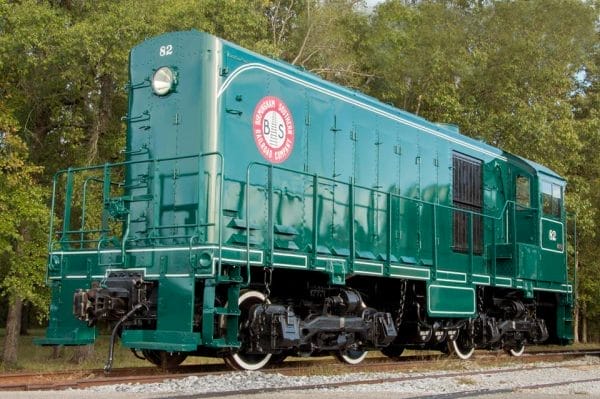 ALCO HH900 #82 Locomotive
In the early 1980s, a series of fires and acts of vandalism resulted in the destruction of some rail cars in the collection, and the HDRC began to look for a new site. The organization settled on a location in Calera (35 miles south of Birmingham), purchased a 10-acre property that includes unused track belonging to the former Alabama Mineral Railroad, and began transporting artifacts and planning construction. The HDRC added five miles of track to the purchased plot to create a loop, and also acquired two historic Alabama depots, which it transported to Calera and fully restored. The Wilton Depot, moved in 1984 from Wilton, Shelby County, now serves as the museum depot exhibit. The Woodlawn Depot, built in 1904 in a Birmingham neighborhood, houses the Boone Library. It holds a multimedia collection of some 1,400 books, 1,100 DVDs, videos, and CDs, photos, slides, technical manuals, rule books, passenger logs, and railway-themed publications. All are available to researchers and rail enthusiasts interested in the history of the railroad industry. The Boone Library also holds a children’s collection including both fiction and non-fiction beginner-level railway-themed literature.
ALCO HH900 #82 Locomotive
In the early 1980s, a series of fires and acts of vandalism resulted in the destruction of some rail cars in the collection, and the HDRC began to look for a new site. The organization settled on a location in Calera (35 miles south of Birmingham), purchased a 10-acre property that includes unused track belonging to the former Alabama Mineral Railroad, and began transporting artifacts and planning construction. The HDRC added five miles of track to the purchased plot to create a loop, and also acquired two historic Alabama depots, which it transported to Calera and fully restored. The Wilton Depot, moved in 1984 from Wilton, Shelby County, now serves as the museum depot exhibit. The Woodlawn Depot, built in 1904 in a Birmingham neighborhood, houses the Boone Library. It holds a multimedia collection of some 1,400 books, 1,100 DVDs, videos, and CDs, photos, slides, technical manuals, rule books, passenger logs, and railway-themed publications. All are available to researchers and rail enthusiasts interested in the history of the railroad industry. The Boone Library also holds a children’s collection including both fiction and non-fiction beginner-level railway-themed literature.
The museum’s permanent collections contain multiple steam locomotives, diesel locomotives, freight cars, passenger cars, and specialty equipment such as electric switchers and maintenance cars. The HDRC also acquired the former Birmingham Zoo park train to shuttle guests along a half-mile loop through the woods. After completing the new site and erecting its infrastructure, the HDRM began to focus primarily on restoration projects and expanding its exhibits. In 2011, the museum painted and restored a Chicago and Northwestern Railroad bi-level coach car and in 2013, a Long Island Rail Road commuter coach car.
The museum regularly holds special events on site. The Calera and Shelby Train Ride allows guests to ride a five-mile loop over the course of an hour in vintage railcars pulled by a diesel-electric locomotive. The nearby Ozan Vineyard hosts wine events at which guests taste locally produced red, white, specialty, and dessert wines and tour the winery before boarding a vintage coach for a scenic ride through the countryside. The HDRM also hosts children’s events. The Cottontail Express event, held every March, ferries children and their parents to a nearby meadow that includes a bounce house, an Easter egg hunt, and photo opportunities with Peter Cottontail. In April, the HDRM hosts a Thomas the Tank Engine-themed event that includes a train ride pulled by a locomotive designed to resemble the popular character, along with storytelling, a bubble station, and miniature golf.
The HDRM is a 501(c)(3) non-profit corporation and funds its day-to-day operations through donations and fees charged for train rides, events, and specialty tours. Most of its employees are community volunteers, and the resulting low labor costs allows the museum to operate with an extremely low overhead. A museum gift shop offers railway-themed souvenirs, gifts, snacks, and beverages. The HDRM discourages guests from participating in the popular but dangerous tradition of flattening coins on its railroad tracks and provides visitors with a penny press for that purpose in the museum gift shop. The museum is located at 1919 9th Street, in Calera, and is open seasonally from about mid-March to mid-December.
